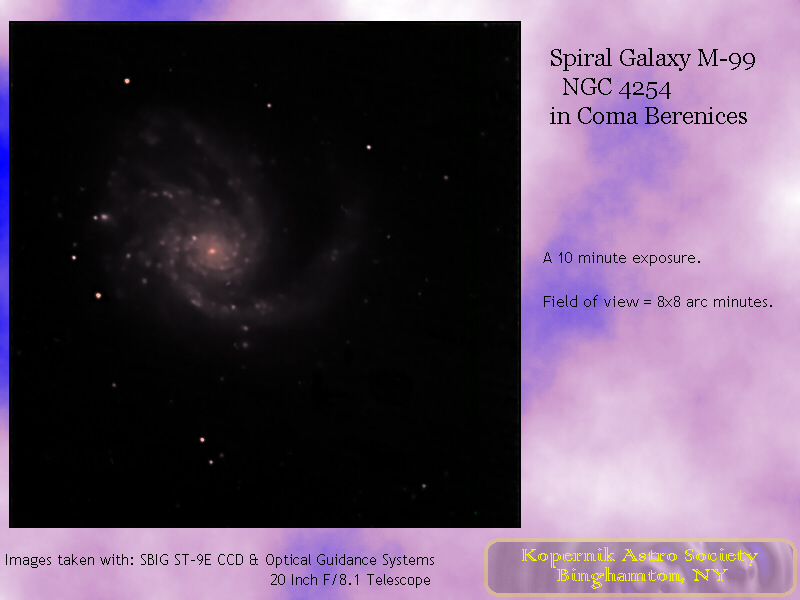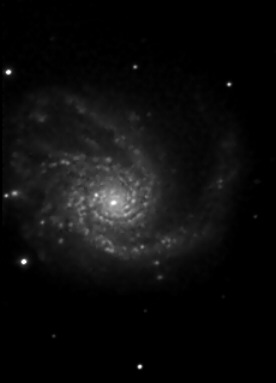
This is a 10 minute exposure with an
ST-9E CCD camera taken thru Kopernik's 20-inch telescope. The field of
view is about 8x8 arc minutes, with North at the top.

This is a 10 minute exposure with an
ST-9E CCD camera taken thru Kopernik's 20-inch telescope. The field of
view is about 8x8 arc minutes, with North at the top.
 |
This is a 7 minute exposure with an ST-6 CCD camera taken thru Kopernik's 20-inch telescope. The field of view is about 5x7 arc minutes, with North at the top. |
C. Messier: April 13th, 1781. "Nebula without a star, of very pale light, nevertheless a little clearer than the preceding, M-98. On the northern wing of Virgo and near the same star, 6 Coma Berenicis. The nebula is between two stars of 7 and 8 magnitude. M. Mechain saw it on March 15th 1781."
John Herschel: “A very remarkable object..... Bright, large, round, gradually brighter in the middle, resolvable: a three-branched spiral.”
Quote from Burnham's
Celestial Handbook:
"The spiral pattern is very well defined,
although somewhat asymmetric, with an unusually far-extending arm on the
west side; the arms are beautifully marked by a series of bright star clouds
and nebulous regions. This system has sometimes been called a 'three branch
spiral', although there are only two major arms. The supposed third arm
actually consists of a number of short segments which radiate out from
one of the main arms of the northeast side. Thin dust lanes can be traced
deep into the bright central mass, and there is a small, almost stellar
nucleus.....one of the largest red shifts of any member of the Virgo Cloud."
Quote from The Deep Sky Field Guide to Uranometria 2000:
"Small, very bright nucleus in complex central lens with many dark lanes, two massive arms with many branches; similar to M-33....."
M-99 was discovered by Pierre Mechain in March 1781. This was the second galaxy that the Earl of Ross recognized as having a spiral structure.
Spiral Galaxy, S-shaped
Click below to
George Normandin, KAS
August 15th, 2002